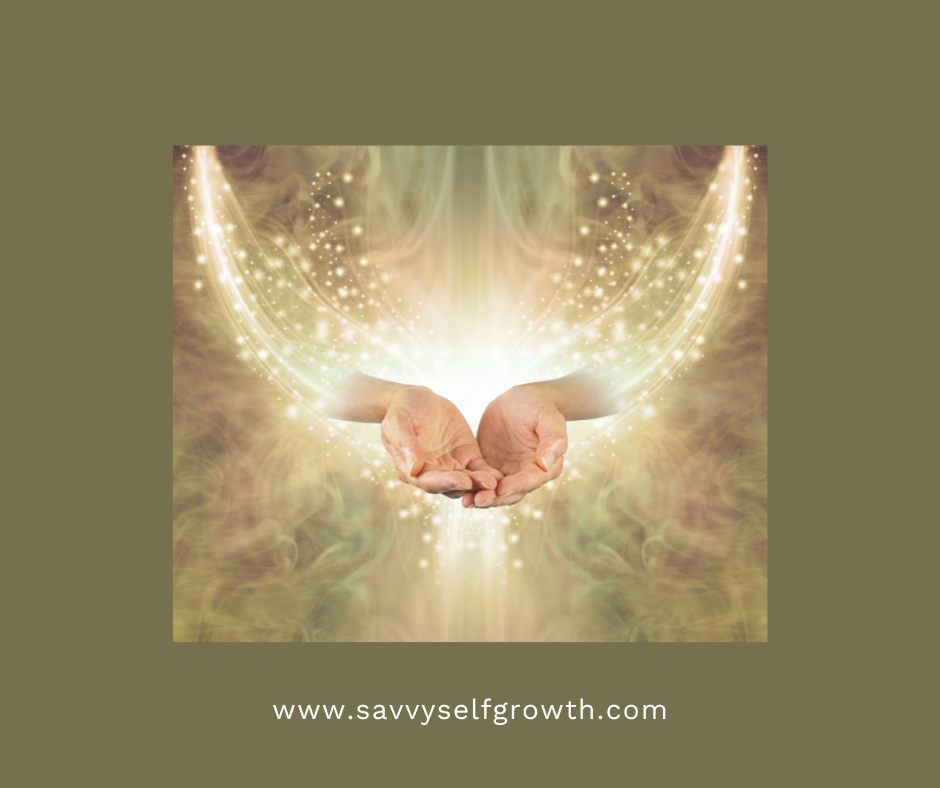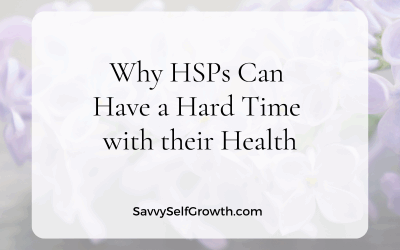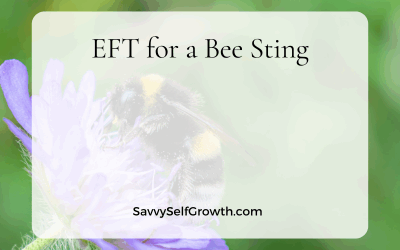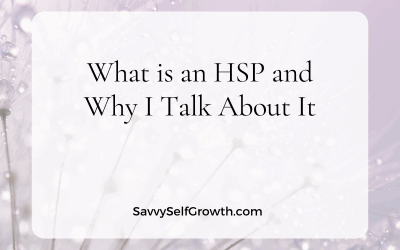Have you noticed how we tend to avoid things that hurt, in our physical body as well as in our emotional world?
It’s natural and normal, of course. Who would want to experience pain? Our body and brain are designed to help us avoid it.
A good example of how we avoid painful things:
In the past 6 weeks, I’ve started to develop a problem in my left shoulder muscles. One night, I got out of bed to go to the bathroom, and in the 20 steps I took to get there, out of the blue I felt a crick in an important shoulder muscle (for those who know — the levator scapulae). Goodness knows how it happened because I wasn’t doing anything in particular with my neck or shoulder, but there it was.
For the next few days, it was hard to turn my neck to the right, and then thankfully it started improving. Our bodies are amazing healing machines and in many cases, they heal without any outside help.
Well, it’s now about 6 weeks later and I’ve noticed that I gradually started avoiding turning my neck to the right. A few days ago, I caught myself in the car turning my whole body to look over that shoulder before reversing. A strategy that kind of works, but is not completely safe nor comfortable.
Something that started suddenly, has now become chronic.
As I was mulling this over, a few points stood out:
Adaptation
When we have an injury, our body is wonderfully quick to adapt. It starts using other muscles to get the job done, so the injured one has a chance to rest and heal.
Sometimes it doesn’t heal without intervention and then becomes chronic.
In that case, all sorts of other muscles are recruited in the process. This means muscles that are not truly designed for the job are used to compensate for the original muscle’s dysfunction. Those recruited muscles will eventually get problems too. It’s like using a plastic knife to do the job of a scalpel. Using the wrong tool for a job is going to lead to more problems.
Cramped
Another result is that our life gets cramped.
We start avoiding activities that would use those muscles. I’m avoiding turning my neck because it’s darn sore — and when I do have to, I use the wrong muscles to help me get the job done. This means they’re overworked. The muscles not meant for the job, eventually get tired too… and the chain continues.
A complex business
So: an injury that does not heal can lead to compensation, avoidance and even a ‘smaller’ life. Our range of motion decreases, enjoyment diminishes, and our life shrinks.
It can be exacerbated by factors like sitting at a desk with a hunched back for hours, and putting strain on our neck from scrolling too long on a phone. Ugh.
Add things like not stretching and strengthening our muscles — and it becomes a tangled mess. Eventually, we go and see a physiotherapist, chiropractor, massage therapist or osteopath. All we want is for one appointment to sort it out so we can continue with our life as we did before!
It might be a bit disappointing when the pain is right back where it started 2 days later.
Truth is… it didn’t start in a day, and it’s likely not going to resolve in a day.
Pain in our inner world
That’s exactly, dear Liesel, how it works in our emotional and mental worlds, too. Only… it’s even more complicated because we’re working with things we can’t point to, and no-one else can see. We can’t put the physio’s finger on the sore muscle and say “THERE — that’s the one that hurts when I turn my head to the right!”
Here’s how I see it work in my practice:
We have an ‘initial internal injury’. Sometimes we call it a trauma if
- it was unexpected
- and it overwhelms our nervous system,
- and we feel isolated,
- and we don’t have adequate resources to deal with it.
We sometimes bury it — because the brain is designed to keep us safe, and doesn’t want us to feel that again. Our brains help us to repress, suppress, ignore or put it away.
We might even think we’ve healed, because we’re not aware of it all the time.
But guess what?
It’s not gone. It’s left an unhealed wound in a place we can’t easily see. It may have scabbed over in time, yes.
And then one day, when we’re required to ‘turn our neck to the right’, the hurt is triggered, and a part of us will prompt us to start avoiding that. Absolutely not consciously. Yet, noticed or unnoticed, we’ll start turning away from certain activities or normal life situations.
And every time we do try to ‘turn our neck to the right’, it’ll hurt a bit, and our brain goes “Yes, I told you it’ll hurt. Don’t do that…”
And now we’ll avoid it even more because we keep being proven right.
Here’s a true-to-life example (details may vary)
Say little Sue had an ‘internal injury’ (trauma) where her mom gave her the idea that her older sister was the special one. It could have been one traumatic time, or multiple smaller incidents that kept happening over and over.
It hurts so very much in a tiny child’s heart.
A 4-year-old has no idea what to make of that. At that age, her entire world revolves around her own safety. The only conclusion little Sue could make, was that it was her fault. She must be bad. There must be something wrong with her.
So, she tries harder to please mom. Only — every time she sees a certain look on mom’s face, she gets that same feeling again: mom doesn’t love her and her older sister can do no wrong. It hurts far too much, so she stops trying. She feels more and more lonely and isolated. She starts believing that no-one is there for her.
In fact, over time it hurts so much to keep trying and failing, that she starts pushing people away because it could potentially hurt to want love yet not receive it. Occasionally, she still tries (subconsciously, of course) to earn love and approval from mom, and sometimes she gets it. But every time there’s the slightest hint of disapproval, she pulls away and concludes she just can’t trust people. It’s too unpredictable.
Sue is older now and…
Eventually, little Sue grows up, and marries young because she is desperate for love. This doesn’t quite work out — he turns out to be abusive and she is brave enough to walk away. But during this marriage, she endures many, many reinforcements of not being loved …. in fact being hurt for who she is, feeling isolated and abandoned, failing at love. Yet more proof that there is something wrong with her, that she is bad.
Sue is learning to use ‘muscles’ that were not originally intended for this job. She’s learning it’s safer to ‘turn her whole body instead of her neck’ — by using strategies that helps her not to hurt so much. Sue is discovering it’s safer to push people away first — then it can’t hurt when they don’t respond to her yearning for love.
Eventually, Sue admits her ways of coping are not working well. She is tired of fighting so hard to feel loved, tired of loathing herself and pushing away her current husband, and exhausted from wondering how to fix it all.
***
Yes, here’s a few knotty bits to untangle. No wonder she’s felt a bit lost trying to unravel it by herself. It started a long time ago when she had no resources to deal with it, when just had to do her best to survive. She learnt strategies that were not ideal, and they did help her to get through a painful childhood. But now those same strategies are causing more problems and pain.
How can Sue heal and have happier relationships?
By the time Sue gets external help and support (like a therapist or EFT practitioner), if feels like everything hurts! She doesn’t know where to start. It’s all a bit messy, painful and too much to face.
I’ve had many clients arrive in this position. Their ‘neck’ has been hurting for a long time, then their back starts hurting, then their left knee starts… and it’s a lot for them to face.
In other words: their relationship with their mother started hurting a long time ago, and then their relationship with their older sister hurt, then it spilled over to other family members, and then their marriage hurt, and as a result the relationship with their children.. and so on.
Now, their life is ‘smaller’ because they have to avoid all the painful things. Conflict is painful, accepting love is painful or impossible, trusting is painful. So much to avoid. We call them triggers. When we have a backpack full of painful events, every interaction can be a trigger for those feelings to come flooding back.
Thoughts on Healing
As an EFT practitioner, I’ve been working with similar issues for years. If you’re in this boat and wondering how long it will take, and the best way to go about it, I’d love to offer these few pointers:
No need to do this alone — get help
The way anyone got into this painful place, was usually a difficult, lonely, painful road. There is absolutely no need to try and figure it out all by yourself. Please do enlist the help or support of a therapist, counsellor or another professional. For these bigger, complex issues we simply cannot be the dr and patient at the same time. Plus, we can’t see in our own blindspots, and we don’t have enough objective distance to see the woods for the trees.
Safety first
Find someone that you can wholeheartedly feel safe, held and comfortable with. Ask for a free conversation first, to find whether you’re a fit. This is deep work, and need absolute safety and never, ever feeling any judgement from the practitioner. Of course, you might feel a bit anxious before the first session. That’s normal and usually a thoughtful, compassionate practitioner will help you work through that in the first session.
How long it will take?
Everyone wants to know how long it will take. Truth is, it’s impossible to say, because in the beginning we don’t yet know about all the historic contributing factors, current habits or other factors that’s keeping the problem in place (like sitting for 3 hours straight with a sore neck!). Ask your practitioner if you can do regular assessments and progress checks.
I do an Intake Form, then an Assessment in the first session so we jot down a few things on a visual board that we want to resolve, and regular progress checks. That way you stay involved and know that you’re making progress. I have had clients work with me for 18 months to resolve some big painful patterns, and I’ve also had clients for 3- 6 sessions when it’s something smaller and less complex. It’s unique to everyone because your history and background is where the roots lie.
View it as an investment
See this work as an investment in your relationships, your future, your happiness, your health. Eventually, if emotional problems stay unresolved, there’s a high likelihood that it could cause health issues.
You’re likely already aware that triggers cause issues in relationships, and impacts your happiness.
Working on our triggers with effective methods is like paying into a pension fund: we’re usually filled with regret if we did not do it soon enough. When we’re young and healthy, we think old age is a million years away and there’s enough time to start saving. And one day, regretfully, time has run out.
How high a priority is it for you?
Sometimes our healing is not a priority yet. Sometimes we have to hurt really, really badly before we move it higher up on the list. Check with yourself — are you willing to keep feeling the hurt, pain, discomfort, and living a smaller life?
Look for improvements in many places
If you’re already in the process of healing, sometimes it can feel like it’s taking too long! Or, you might be thinking “I’ve been working hard at this and I would have expected it all to be gone by now!” I like to remind my clients of a wise way to measure progress, which helps us to stay motivated and keep going. Instead of thinking ‘All or nothing’, this is a far more sane way to measure progress.
Start changing habits gradually
Sometimes we need to start changing our actions to contribute to the change we want. For instance:
- Learning to say no
- Walking away from things we don’t want to do anymore
- Trying out new ways of communicating
- Stretching our comfort zone, like making a video for our business
My suggestion for any change is to take it slowly, gradually, gently. Change is hard for a nervous system, and also for those around us if they were not the one asking for change. This article explains a bit about change.
Summary:
Triggers don’t disappear because we don’t feel them all the time. They make our lives increasingly smaller and less enjoyable. Healing takes time, and it needs safety which we can rarely offer ourselves. Usually, the presence of another safe person is helpful. When we don’t heal those triggers, we’ll encounter challenges and problems later on — and if we leave them a long time, it can add more complexity to sort through.
Yet I’ve seen absolutely remarkable healing and progress in situations with very complex contributing factors. Always believe healing is possible! I’d highly encourage you to reach out (to me or others) and start this journey to healing and more freedom of choice.




